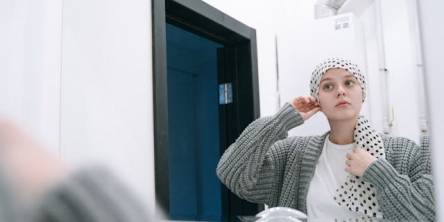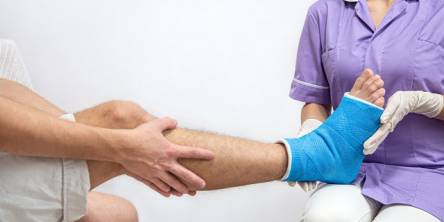How Posture Affects How We Think and Feel
We slouch when we’re sad, bend our neck down when depressed, sit up straight when motivated, and walk with a chest out when we’re confident. But sometimes, it’s the other way around.
Studies prove that posture affects a person’s mood. Slouching can make us sad, and bending our neck down can also make us depressed. But it holds true for good posture too. Sitting up straight can make us feel more positive.
The relationship between our emotions and thinking and our body is called embodied cognition. It’s a way of thinking that emphasizes how our physical movements affect the way we think and feel, and vice versa. Here are key areas that posture affects.
1. Opinion
A 2003 study at Ohio State University concluded that physical actions can influence our opinions on an issue without us being conscious about it. Nodding to denote approval and shaking their heads to denote disapproval affected what they thought. The people who nodded when expressing an opinion felt more confident about what they thought compared to the people who shook their heads.
2. Mood
The same study in Ohio also proved that self-love reduces physical pain—well, at least, hugging yourself does. This might be a helpful trick for people who feel back pain after a long day at work, sitting in a not-so-comfortable office chair.
Behavioral scientist Erik Peper from the Netherlands also makes it a point to compel students in his classes to do some stretches because it puts them in a more positive disposition. Apart from changing our moods, posture also affects our memory recall. Sitting up straight helps in remembering good memories, according to the experiment.
3. Confidence
Another research published in the European Journal of Social Psychology in 2009, a total of 71 students were made to sit up straight or slouch and face down. They were asked to list three personal traits they think is important for being happy with a job and performing well while sitting with the posture assigned to them. They were asked to rate their imagined future selves based on those traits.
The study found a correlation between their assigned posture and the traits they listed. The students who sat up straight were more confident about their traits while the students who slouched didn’t trust in their capacity to deliver.
Developing Good Posture
Forming good habits such as sitting up straight and walking with a chest out may be hard at first, especially for people who got used to walking like a caveman, but there are concrete ways to develop it.
Exercise – Gentle stretches are crucial to break the monotony of a sedentary lifestyle at the office. Doing some exercises on a yoga chair at work is also useful. Having a daily routine helps your muscles in the long run, just so they don’t get used to staying in one position for long periods.
Posture support tools – While many think of back belts when they think of this, back belts are more applicable for people whose job involves lifting or carrying heavy things. For the ordinary office worker, there are chairs for posture support that can help maintain good posture.
Rehearsing – Practicing a project report, or a pitch with good posture not only helps you prepare for the real thing but also boosts your confidence prior to the actual presentation.
Posture is usually emphasized in the context of ergonomics but taking care of our emotional health is as important as being productive at work. After all, our productivity is highly influenced by the way we feel. It’s not always a good work day. But sitting up straight can make a difference.
Similar Articles
For cancer patients experiencing hair loss, a comfortable and stylish head covering can make a world of difference in boosting confidence and providing warmth. Creating headwear tailored to their needs requires thoughtful material choices, gentle designs, and a touch of creativity.
Going through a phase of addiction recovery is never easy, no matter how early you start treatment intervention.
In recent years, medical tourism has emerged as a thriving global phenomenon, with millions of patients crossing borders to seek high-quality healthcare services abroad
Struggling to hear? Learn the signs of hearing loss, the risks of ignoring it, and how modern hearing aids can improve your life. Take action today!
Explore various addiction recovery programs, from inpatient to outpatient and therapy options. Find the right path to sobriety and lasting recovery in this comprehensive guide.
Learn how to combine FSS and Medicaid Waiver Services for maximum benefit. FSS offers immediate family support, while Medicaid Waiver focuses on long-term individual care.
Our bodies hold a fantastic transport web under the skin. These hidden roads are our veins, which help move blood around so we can stay active and alert. They are small streams that lead back to the heart, carrying essential nutrients and oxygen.
Do you ever ask yourself why athletes and fitness enthusiasts rely on ice baths to help their sore muscles relax more?
Learn why dust extractor equipment is vital for hospitals, ensuring cleaner, healthier environments by eliminating harmful dust, allergens, and germs.









